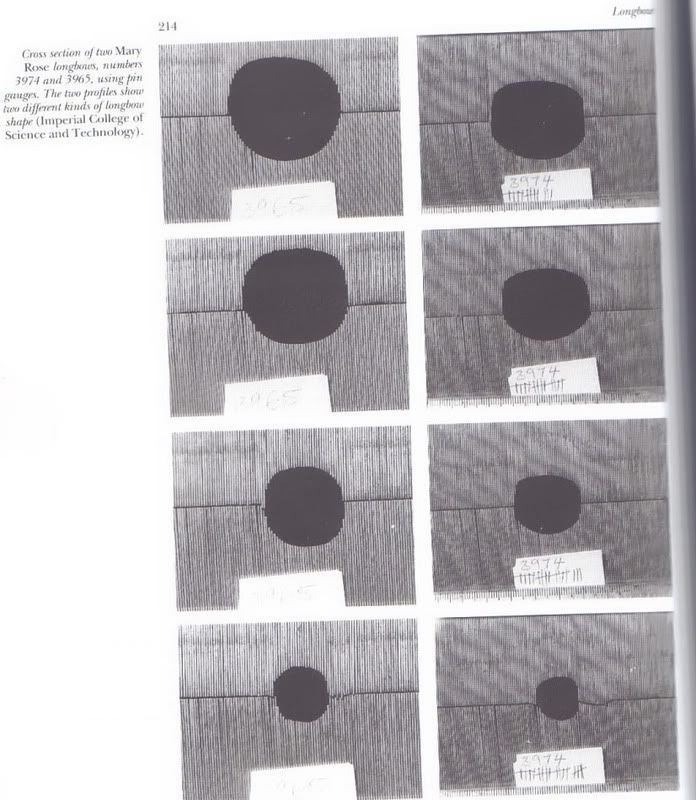Mark -
There are two problems - first is that information level advanced in 5 years enormly, and the second that even Hardy and Strickland made mistakes in things they for example had no experience themselves. That of itself isnt bad, but science isnt sum of knowledge, but rather a method how to obtain it.
Erik - "Those who consider Hugh Soar a reliable authority are invited to check “Secrets of the English Warbow”. He not only refers to the existence of MR bows of rectangular section but says how many were found"
Yeh thank you for reffering to book, which not only I happen to have, but into which two my best friends contributed. Anyway the bows you quote are not "square" - they are maybe "squarish" if you want to call them any name and if there is 8 of them then its whooping 4 percent of all bows found. Madonna mia! What shall I do (panic)

. Hugh´s pet "crossbow" theory is even over enormous respect I have to his work something of sort his personall fantasy - because if you want crossbow, you have to have stock and mechanics too, of which there is no evidence whatsoever, and off course the fact that there is zero room on MR gundeck for giant crossbows with span of 80". I find the idea ridiculous. There is not a hint of evidence.
"Two of them are #A807 and #A115"
I dont think those are what an engeneer call square. We are still talking about bows with moderatelly rounded belly. I can ask directly, but I fear that those are a) galeon or very uneven profile b) so called "slab sided" bows - which by many people have been refered wrongly as "square" and off course rebutall
(Btw - quick search shows that even in Journal of society of Archery antiquities these are called "squarish" - which can be lots of shapes.)

I suppose that you can call upper right profile "squarish" as it has obviously 4 corners, right?
"According to information I have seen, bows from Nydam up to MR were either of D section, oval, rectangular, or trapezoidal."
Please be so kind and make a bell-curve distribution of profiles of found bows and we shall talk. That would be scientific. Mind you living in archeologicall comunity I have the actuall datasheets from various finds starting nydam - and one thing is painfully clear, when single stave european bow is concerned the rectangular section seems to be associated with rather primitive weapons, in extremelly small numbers, and it does not seem to be product of anything else than technology. (meaning either the tools or the wood was not enough to make better weapon)
"BTW I believe the high belly ridge {galleon] was a short lived Victorian idea abandoned when found to be a bad idea."
-Again you have conviction of something of which you aparently have no information. Not only have been such bows found on MR but for example alemanic yew bows from warrior graves in 4-6. century have these prominent pattern. (They are smallish raised handle weapons, incomparable in any aspect to MR beast and they appear to be made to stack for reason.) Yet it is not victorian idea, for they have been around longer than one might think. (And again only one specific pattern ov victorian bow made of unbendable woods is made in this shape. Which is like gothic arch, rather than "galeon" I m speaking about.)
"Ascham says ”If a bow be flat made, gather it round”."
That is something without a context I would tell somebody if I wanted him to retiler his bow into more arc shape.

"These points have convinced me that rectangular section bows did exist."
Oh yes, you find squarish sticks among european longbow finds - for example 9. cetury moravia magna bow from Velké Mikulčice, which displays similar pattern like the frankish/alemanic bows, but instead of ridge it has flat choped belly. But it has also well rounded back, as it comes from very small sapling. I assure you if somebody who only knows prominent victorian D pattern looked at that bow he would thought the belly and back being reverse oriented.
These bows did existed, yet for different reasons you think and off course, they cannot be called flatbows.
J.